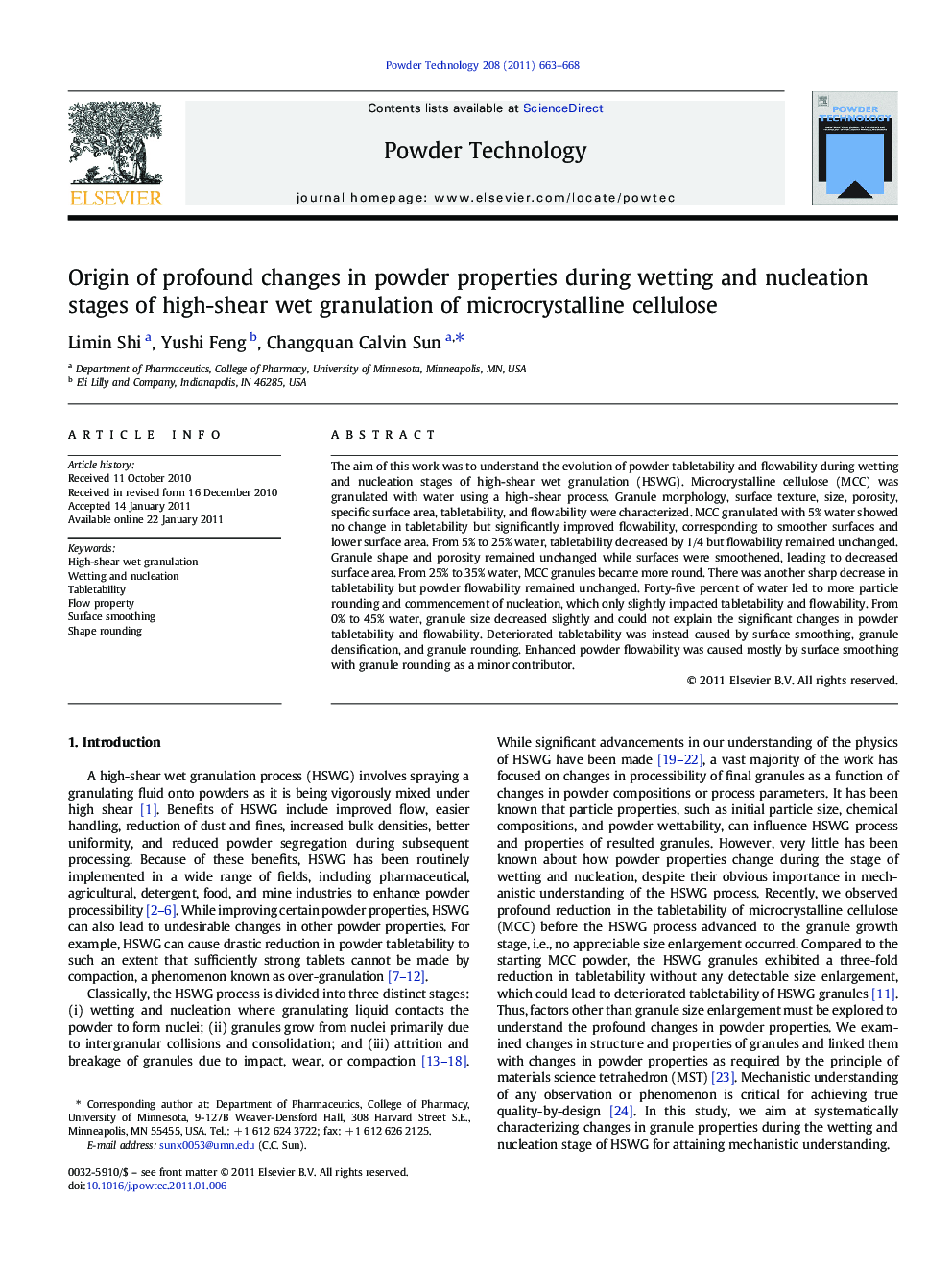| Article ID | Journal | Published Year | Pages | File Type |
|---|---|---|---|---|
| 237599 | Powder Technology | 2011 | 6 Pages |
The aim of this work was to understand the evolution of powder tabletability and flowability during wetting and nucleation stages of high-shear wet granulation (HSWG). Microcrystalline cellulose (MCC) was granulated with water using a high-shear process. Granule morphology, surface texture, size, porosity, specific surface area, tabletability, and flowability were characterized. MCC granulated with 5% water showed no change in tabletability but significantly improved flowability, corresponding to smoother surfaces and lower surface area. From 5% to 25% water, tabletability decreased by 1/4 but flowability remained unchanged. Granule shape and porosity remained unchanged while surfaces were smoothened, leading to decreased surface area. From 25% to 35% water, MCC granules became more round. There was another sharp decrease in tabletability but powder flowability remained unchanged. Forty-five percent of water led to more particle rounding and commencement of nucleation, which only slightly impacted tabletability and flowability. From 0% to 45% water, granule size decreased slightly and could not explain the significant changes in powder tabletability and flowability. Deteriorated tabletability was instead caused by surface smoothing, granule densification, and granule rounding. Enhanced powder flowability was caused mostly by surface smoothing with granule rounding as a minor contributor.
Graphical AbstractPowder flow and compaction properties change profoundly during the wetting and nucleation stages of HSWG. These changes originate from changes in particle properties, including size, porosity, specific surface area, and morphology.Figure optionsDownload full-size imageDownload as PowerPoint slideResearch Highlights► Flow property of microcrystalline cellulose (MCC) powder improves significantly during the wetting and nucleation stages of HSWG process. ► Powder compaction property of MCC powder deteriorates profoundly during the wetting and nucleation stages of HSWG process. ► Deteriorated tabletability is caused by particle surface smoothing, particle densification, and particle rounding. ► Enhanced powder flowability is mainly caused by surface smoothening with shape rounding as a minor contributor.
